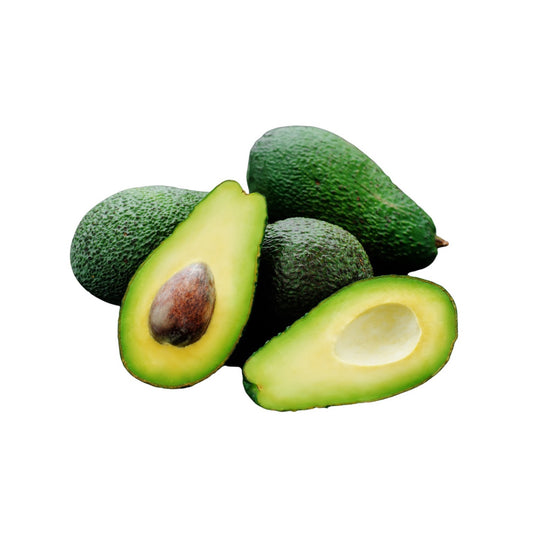Article Summary:
- Greek yogurt is significantly higher in protein compared to regular yogurt, often containing around 15-20 grams per serving, making it an excellent choice for muscle recovery and satiety.
- The straining process used to make Greek yogurt removes excess whey, resulting in a product that is lower in sugar and carbohydrates, which can be beneficial for those monitoring their intake.
- Greek yogurt is packed with essential nutrients, including calcium, vitamin B12, probiotics, and iodine, all of which contribute to improved bone health, digestive health, and overall well-being.
Greek yogurt has gained immense popularity in recent years, celebrated not only for its creamy texture and tangy flavor but also for its impressive nutritional profile. Originating from Greece, this strained yogurt is made by removing the whey, resulting in a thicker consistency compared to regular yogurt. Packed with protein, probiotics, and essential nutrients, Greek yogurt serves as a versatile ingredient in both sweet and savory dishes. Whether enjoyed on its own, used as a base for smoothies, or incorporated into recipes, Greek yogurt offers a delicious and healthy option for those seeking to enhance their diet. In this article, we will explore the origins of Greek yogurt, its nutritional benefits, how it differs from traditional yogurt, culinary uses, and tips for selecting the best varieties available.
Nutritional benefits of greek yogurt
Greek yogurt is renowned for its impressive nutritional benefits, making it a popular choice for health-conscious individuals. One of the standout features of Greek yogurt is its high protein content, often containing nearly double the amount found in regular yogurt. This makes it an excellent option for those looking to increase their protein intake, whether for muscle building, weight management, or simply to feel fuller for longer. The protein in Greek yogurt also supports muscle repair and growth, making it a favored post-workout snack.

Shop 300ml Kefir at Orchard Food
In addition to being rich in protein, Greek yogurt is a good source of probiotics, which are beneficial bacteria that promote gut health. These probiotics can aid in digestion, enhance immune function, and may even contribute to improved mental health by influencing the gut-brain axis. The fermentation process used to create Greek yogurt helps preserve these live cultures, making it a tasty way to support overall digestive health.
Greek yogurt is also packed with essential nutrients. It provides significant amounts of calcium, which is vital for maintaining strong bones and teeth, as well as potassium, which helps regulate blood pressure and supports heart health. Furthermore, Greek yogurt contains B vitamins such as riboflavin and B12, which play important roles in energy metabolism and the functioning of the nervous system.
Another advantage of Greek yogurt is its lower sugar content compared to many flavored yogurts. This makes it a healthier choice for those looking to reduce their sugar intake while still enjoying a creamy and satisfying dairy product. Additionally, its versatility allows it to be easily incorporated into various meals and snacks, whether used in smoothies, salad dressings, or as a base for desserts.
Overall, the nutritional benefits of Greek yogurt make it an excellent addition to a balanced diet. Its high protein content, probiotic properties, and rich array of vitamins and minerals contribute not only to physical health but also to overall well-being.
The origins and history of greek yogurt
The origins and history of Greek yogurt are rich and complex, tracing back thousands of years to ancient civilizations. While the concept of yogurt itself likely emerged around 5000 BC in the Neolithic Near East, where early herders accidentally fermented milk stored in animal skins, the specific style known as Greek yogurt began to take shape much later. The term "Greek yogurt" is somewhat misleading, as the process of straining yogurt to create a thicker consistency likely originated in the Middle East before spreading to Greece. In ancient Greece, a similar product called "oxygala" was consumed, which was made from sour milk and often enjoyed with honey, a practice noted by the Greek physician Galen in the 2nd century AD.
Greek yogurt as we know it today became popularized in the 20th century, particularly through the efforts of family-owned dairies like FAGE, which introduced strained yogurt to European markets in the 1980s. This product quickly gained traction due to its higher protein content and creamy texture compared to regular yogurt. The marketing strategy that branded it as "Greek" capitalized on the health benefits associated with Mediterranean diets, further boosting its appeal. As Greek yogurt's popularity surged globally, large-scale dairy producers began using cow's milk instead of traditional sheep's milk to meet demand, although authentic Greek yogurt remains distinct for its traditional preparation methods.
Today, Greek yogurt is celebrated not only for its unique flavor and texture but also for its nutritional benefits, making it a staple in many diets around the world. Its historical roots reflect a journey of culinary evolution that spans cultures and centuries, transforming from a simple fermented dairy product into a beloved health food enjoyed across various cuisines.
How greek yogurt differs from regular yogurt
Greek yogurt differs from regular yogurt primarily in its texture, taste, and nutritional profile, resulting from the distinct production process used to create it. The most notable difference is that Greek yogurt is strained multiple times to remove excess whey, the liquid portion of yogurt. This straining process results in a thicker, creamier consistency compared to regular yogurt, which retains more of its whey and has a smoother texture. Consequently, Greek yogurt often has a tangier flavor, which many people find appealing.

Shop 500g Mangoes at Orchard Food
Nutritionally, Greek yogurt typically contains more protein than regular yogurt. This higher protein content arises from the concentration of milk solids during the straining process. While a standard serving of regular yogurt may contain around 5 to 7 grams of protein, Greek yogurt can provide upwards of 15 to 20 grams per serving. This makes Greek yogurt an excellent choice for those seeking to increase their protein intake for muscle building or weight management.
In terms of carbohydrates and sugar content, Greek yogurt generally has lower levels than regular yogurt. The straining process reduces the lactose content, making Greek yogurt a suitable option for individuals who are lactose intolerant or looking to minimize their carbohydrate intake. Additionally, many brands offer unsweetened Greek yogurt varieties that contain little to no added sugars, further enhancing its appeal as a healthier alternative.
While both types of yogurt offer health benefits and contain probiotics that support gut health, the specific strains and quantities of these beneficial bacteria can vary between products. Regular yogurt may have a wider variety of probiotic strains due to its less intensive processing. However, many brands of Greek yogurt also include live cultures that contribute to digestive health.
Ultimately, the choice between Greek yogurt and regular yogurt often comes down to personal preference regarding texture and taste, as well as specific dietary goals. Whether you opt for the thick creaminess of Greek yogurt or the smoothness of regular yogurt, both can be nutritious additions to your diet when consumed in moderation.
Choosing the best greek yogurt
Choosing the best Greek yogurt involves considering several factors to ensure you select a product that meets your nutritional needs and taste preferences. First, it’s important to look at the ingredient list. The best Greek yogurts typically contain just two main ingredients: milk and live active cultures. Avoid products with added sugars, artificial flavors, or preservatives, as these can detract from the health benefits of the yogurt. Opting for plain Greek yogurt allows you to control the sweetness by adding your own natural sweeteners, such as honey or fresh fruit.
Next, pay attention to the protein content. While most Greek yogurts are higher in protein than regular yogurt, there can still be significant variations between brands. Look for options that provide at least 15 grams of protein per serving if you’re aiming to boost your intake. Additionally, consider the fat content based on your dietary goals. Greek yogurt is available in whole, low-fat, and non-fat varieties, so choose one that aligns with your nutritional preferences.
Another aspect to consider is the presence of probiotics. Many Greek yogurts contain live active cultures that promote gut health, but not all brands specify the strains used or their quantities. Look for products that highlight the presence of probiotics on the label, as these beneficial bacteria can enhance digestion and overall health.
Packaging can also play a role in your choice. Opt for brands that use environmentally friendly packaging or glass containers when possible. Lastly, consider taste and texture; some brands may have a creamier consistency or a tangier flavor than others. Sampling a few different brands can help you find one that you enjoy most.
By taking these factors into account—ingredient quality, protein content, fat levels, probiotic presence, and personal taste preferences—you can confidently choose the best Greek yogurt that fits your lifestyle and enhances your diet. With so many options available on the market today, finding a high-quality Greek yogurt is easier than ever, allowing you to enjoy its delicious flavor and numerous health benefits.










